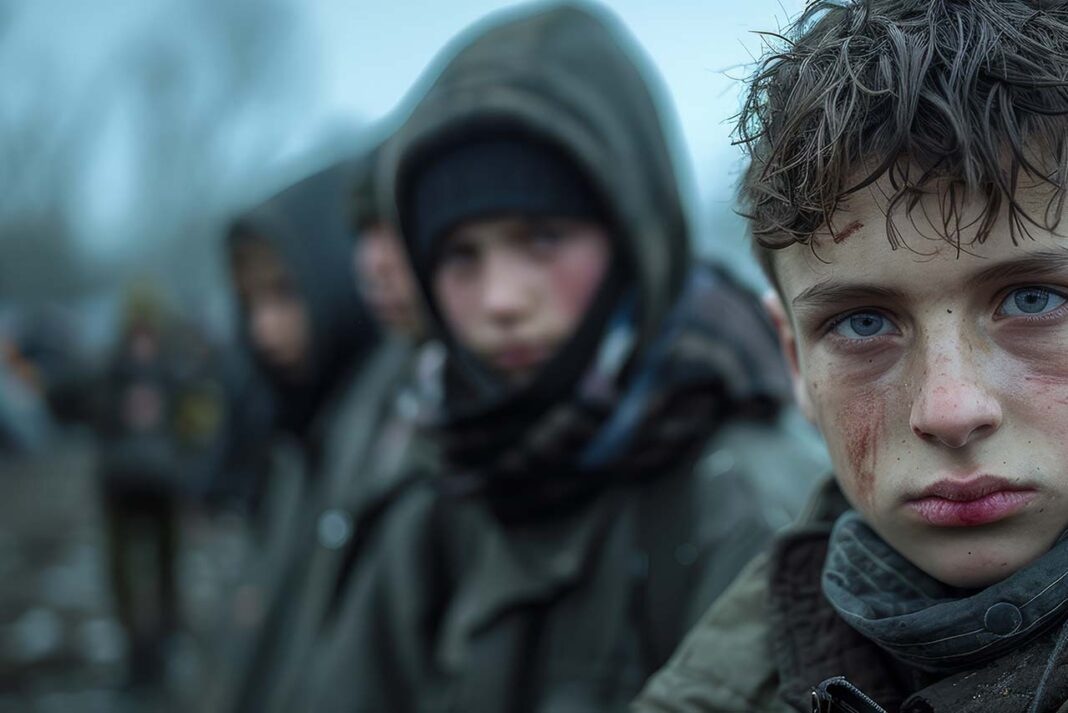The term “terror” is derived from the Latin verb terrere, meaning “to frighten” or “to cause terror.” It first appeared in the 18th century during the French Revolution (1793–1794), a period known as La Terreur or “The Reign of Terror.” This era saw the systematic use of mass violence, executions, and torture to suppress counter-revolutionaries, and the term entered scholarly literature to describe various policies of intimidation. Subsequently, the word “terrorism” entered English dictionaries in 1798, signifying “the systematic use of terror as a political instrument.” In the later 19th century, Russian radical movements (those that identified as “terrorist”) pioneered the modern understanding of terrorism as politically motivated violence carried out by non-state actors. From the 19th century onward, the concept of “terrorism” came to encompass acts of violence by non-state actors, such as anarchist groups, for political objectives (Wikipedia, 2025).
The use of child soldiers in warfare and armed conflict dates back thousands of years. Historical evidence indicates that from prehistoric times to the Middle Ages and ancient periods, young children often served in supporting roles (e.g., carrying weapons, flags, messages, or serving as sailors), while adolescents were trained for active combat roles. The systematic recruitment and strategic use of children in modern terrorist recruitment and organized crime, however, began in the late 19th century. Notably, during World War I and World War II, some children were enlisted and participated in underground resistance movements. For instance, during the Sierra Leone Civil War (1991–2002), the Revolutionary United Front (RUF) prepared more than 10,000 children, mostly between the ages of 8 and 10, in a separate unit called the Small Boys Unit for combat roles (Denov, 2010). Today, unfortunately, various terrorist groups in the Middle East and Africa—including PKK, PYD, Al-Qaeda-affiliated groups, Boko Haram, and the Lord’s Resistance Army—continue to employ children. For insights into how children are recruited by these groups, see Psychology Times.
Why Do Terrorist Organizations Prefer Children?
-
Ease of Manipulation and Indoctrination:
Children are inherently more vulnerable and impressionable. Through reward, punishment, or manipulative indoctrination, they can be easily controlled (Haer, 2019). -
Cost-Effectiveness:
Children require fewer resources for care, basic needs, and training. The rewards or salaries provided to them by the organization are significantly lower than those for adults (Bloom, 2019). -
Physical Advantages:
Their small, agile, and inconspicuous nature makes them suitable for espionage, courier duties, surveillance, and other tactical operations. -
Reduced Suspicion:
Children attract less attention from security forces and the public. As a result, they can perform tasks such as sabotage or arson with a higher likelihood of success (Singer, 2006). -
Powerful Propaganda Tool:
Children carrying weapons or killed in combat generate stronger public reactions than adults. Organizations exploit this to gain support and delegitimize opponents (The Conversation, 2017). -
Long-Term Investment:
Children indoctrinated at an early age become loyal militants in the future. Additionally, exposing children to criminal activities compromises their civilian life prospects, ensuring prolonged dependency on the organization (Coalition to Stop the Use of Child Soldiers, 2008). -
Disposable Assets:
Children are viewed as expendable within the organization. They are low-cost and often serve as pawns until they reach higher ranks or become fully trained. -
Legal Advantage:
Children are subject to lighter legal penalties than adults, and in some cases, may face no punishment. Being categorized as “children in conflict with the law” allows them greater access to supportive resources, which can indirectly benefit the organization (Drumbl, 2012; ILO, 2017). -
Human Shield Advantage:
In confrontations with state forces, deploying children on the front lines or in risky operations complicates responses due to national and international laws prioritizing child protection. This provides tactical leverage to the organization. -
Special Use of Girls:
Female children are exploited not only as combatants but also for sexual abuse, forced marriage, serving as companions for militants, or to increase internal population and cohesion within the group (McKay & Mazurana, 2004).
References
-
AP News. (2024, August). An Islamist group used child soldiers in Mozambique attacks, says Human Rights Watch. Retrieved from https://apnews.com
-
Bloom, M. (2019). Small arms: Children and terrorism. Cornell University Press.
-
Coalition to Stop the Use of Child Soldiers. (2008). Child soldiers: Global report 2008. London: Author.
-
Denov, M. (2010). Child soldiers: Sierra Leone’s revolutionary united front. Cambridge University Press.
-
Drumbl, M. (2012). Reimagining child soldiers in international law and policy. Oxford University Press.
-
Haer, R. (2019). Children and armed conflict: Looking at the future. Peace Economics, Peace Science and Public Policy, 25(1), 1–8. https://doi.org/10.1515/peps-2018-0047
-
Human Rights Watch. (2014, June 22). “Maybe we live and maybe we die”: Recruitment and use of children in armed groups in Syria. Retrieved from https://www.hrw.org/report/2014/06/22/maybe-we-live-and-maybe-we-die/recruitment-and-use-children-armed-groups-syria
-
Human Rights Watch. (2015, July 10). Syria: Kurdish forces violating child soldier ban. Retrieved from https://www.hrw.org/news/2015/07/10/syria-kurdish-forces-violating-child-soldier-ban-0
-
Human Rights Watch. (2018, August 3). Letter from the Kurdish Democratic Union Party (PYD)-led autonomous administration on child recruitment. Retrieved from https://www.hrw.org/news/2018/08/03/letter-kurdish-democratic-union-party-pyd-led-autonomous-administration-responding
-
The New Humanitarian. (2016, February 26). War is no excuse: PYD deployment of child soldiers. Retrieved from https://deeply.thenewhumanitarian.org/syria/community/2016/02/26/war-is-no-excuse-pyd-deployment-of-child-soldiers.html
-
International Labour Organization. (2017). Children in armed conflict: The role of child labour. Geneva: ILO.
-
McKay, S., & Mazurana, D. (2004). Where are the girls? Girls in fighting forces in Northern Uganda, Sierra Leone and Mozambique. Rights & Democracy.
-
Singer, P. W. (2006). Children at war. University of California Press.
-
The Conversation. (2017, March 8). Why terrorist groups recruit children. Retrieved from https://theconversation.com
-
UNICEF. (2021). Children recruited by armed forces or armed groups. Retrieved from https://www.unicef.org
-
Wikipedia contributors. (2025, August). History of terrorism. In Wikipedia. Retrieved from https://en.wikipedia.org



